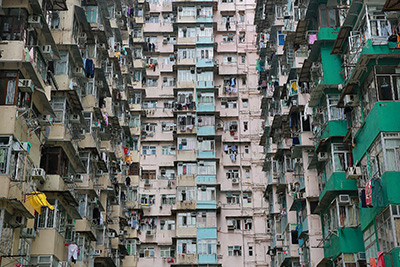Action demanded after hydrocarbon explosion
28th May 2015
HONG KONG: The Government of Hong Kong has been criticised for failing to regulate flammable refrigerants after an air conditioner containing a hydrocarbon refrigerant caught fire, injuring 20 people.
The head of Hong Kong’s Office of the Ombudsman, Connie Lau Yin-hing, has accused the government of “grave insufficiency” in not regulating flammable refrigerants in air conditioning systems following the fire at the Chevalier restaurant in Ma On Shan in 2013.
In a press conference today Lau said she found it highly undesirable that there was no single government department to oversee the problem of flammable refrigerants. And, despite the explosion, two air conditioners were still operating with flammable refrigerants at the restaurant. The Ombudsman has called for tighter controls on flammable refrigerants and better training amongst operatives.
Hong Kong’s Office of The Ombudsman is an independent statutory authority set up to look into grievances arising from maladministration in the public sector.

Incident in 2013
The restaurant incident in January 2013 occurred while a technician was repairing the air conditioning system. Witnesses at the time said they heard two explosions which smashed all the windows in the second floor restaurant and scattered glass on to the street below where several passers-by were also injured. In total, more than 20 people were injured and the restaurant was seriously damaged.
Subsequent investigations found that the explosion and fire came as a result of the engineer recovering flammable refrigerant from the air conditioning system into a non-reusable cylinder not designed for refilling, resulting in a leakage. The mixture of flammable refrigerant and air came into contact with a source of ignition, triggering an explosion and a huge fire.
As a result, the air conditioning contractor was fined a total of HK$22,000 (€2,600) for storing dangerous goods (other than LPG) without a licence and using unauthorised gas cylinders (referring to the other cylinders found on the premises, which were of a different model from the one involved in the explosion). The contractor was also fined an additional HK$35,000 (€4,100) for failing to provide a safe working environment for his employees.
Not suitable
Following the incident, Hong Kong’s Labour and Welfare Department was informed by the proprietor of the restaurant that all three air conditioning systems in the restaurant used flammable refrigerants, even though they were not suitable for flammable refrigerants.
In Hong Kong, flammable refrigerants are classified as LPG or non-LPG depending on their composition. If a refrigerant is considered to be an LPG under the Gas Safety Ordinance, the Electrical and Mechanical Services Department can regulate every aspect of its manufacture and supply, including its use in air conditioning systems. Refrigerants classified as dangerous goods (other than LPG) fall under the auspices of the Fire Department who can regulate their manufacture, storage, transport and general use but not their import or supply, nor their use in air conditioning systems.
Incredibly, the Cooling Post has learned that in 2011, the air conditioning contractor involved in the Ma On Shan incident had replaced a non-flammable refrigerant (probably R22) with a Chinese refrigerant known as HR427 (a mixture of propane and isobutane) in a number of air conditioning systems not designed for flammable refrigerants. The Electrical and Mechanical Services Department ordered that operation of the systems be stopped immediately as HR427 was considered an LPG.
In the Ma On Shan incident, the same contractor again used a flammable refrigerant on the three air conditioning systems which were not designed for flammable refrigerants. This time it was the Chinese refrigerant sold as HR429, or neat propane, a gas considered non-LPG by the Electrical and Mechanical Services Department.
So, even after one of the systems exploded, the remaining two were allowed to continue operation without any regulatory control. This was because under the existing mechanisms, all departments concerned considered such operation to be outside their jurisdictions.
No import controls
The Ombudsman notes that although China and Japan is increasingly using flammable refrigerants, Hong Kong has no import controls in place, either on the import of flammable refrigerants or on air conditioning equipment using such refrigerants. Hong Kong’s own statistics show that flammable refrigerants accounted for about 8% of all refrigerant imports.
Meanwhile, according to the Ombudsman, some companies in the environmental protection business are conducting door-to-door visits to prospective clients to market “eco-friendly and energy-saving” hydrocarbon refrigerants.
“They claim that in addition to being energy-efficient, these refrigerants can be used on the original equipment to replace non-flammable refrigerants without modifying the equipment. Similar advertisements can be found on the Internet,” says the Ombudsman.
In addition, the report found that even if Hong Kong has not imported any equipment suitable for flammable refrigerants so far, recent investigations have already revealed that flammable refrigerants were being used to replace non-flammable refrigerants on existing air conditioning systems with unsuitable design in various places in Hong Kong.
Air conditioning workers in Hong Kong are not required to undergo training on air conditioning. Even when they do, the leading provider of air conditioning vocational training in Hong Kong does not cover training on the use of flammable refrigerants.
The government’s Electrical and Mechanical Services Department is reported to have stated that it considered the use of flammable refrigerants highly risky under the present circumstances in Hong Kong.







